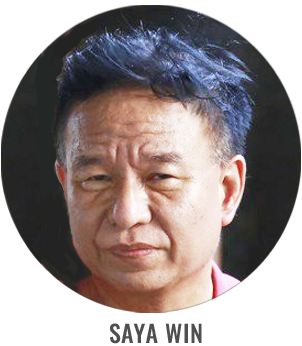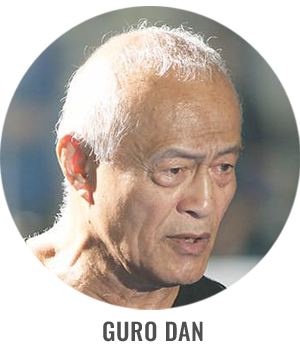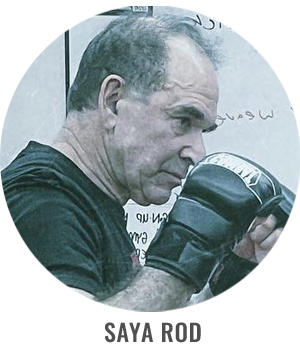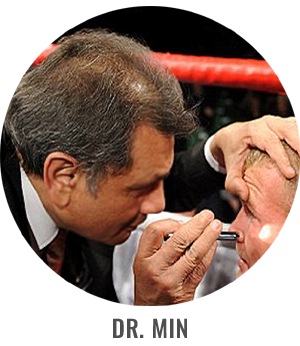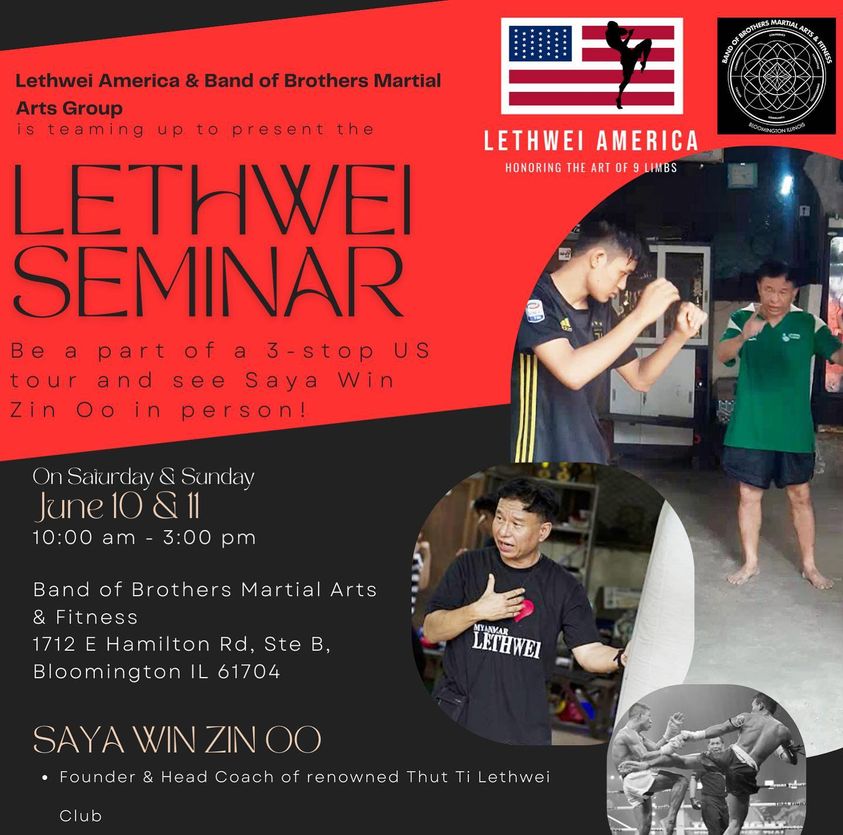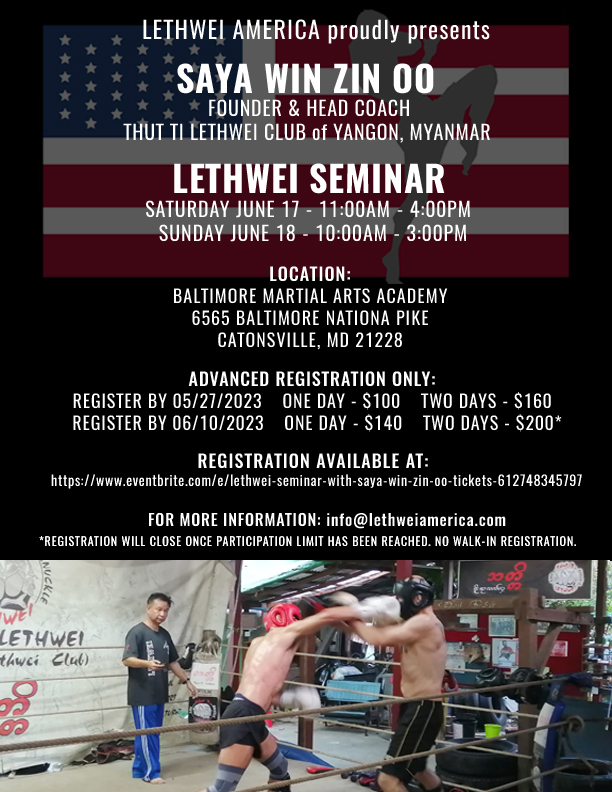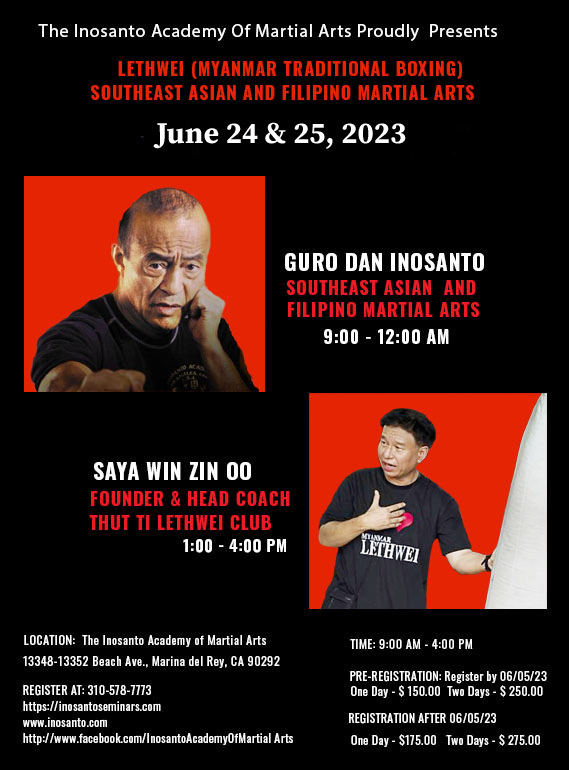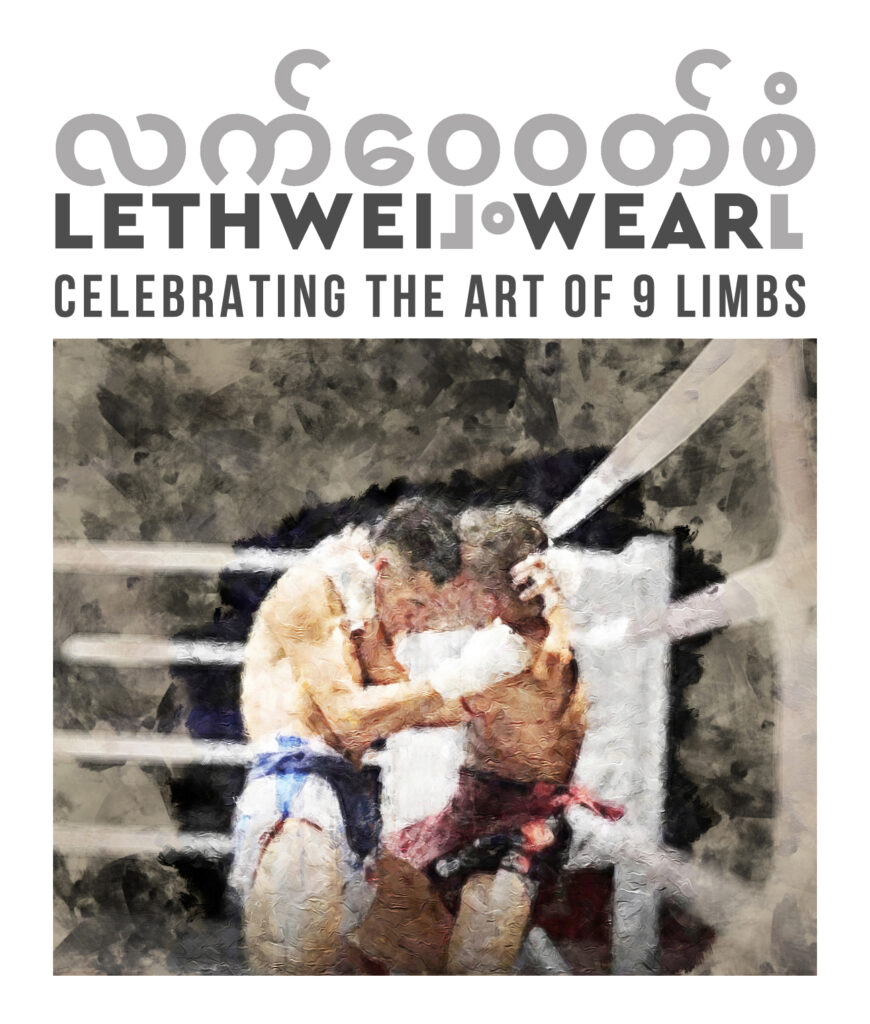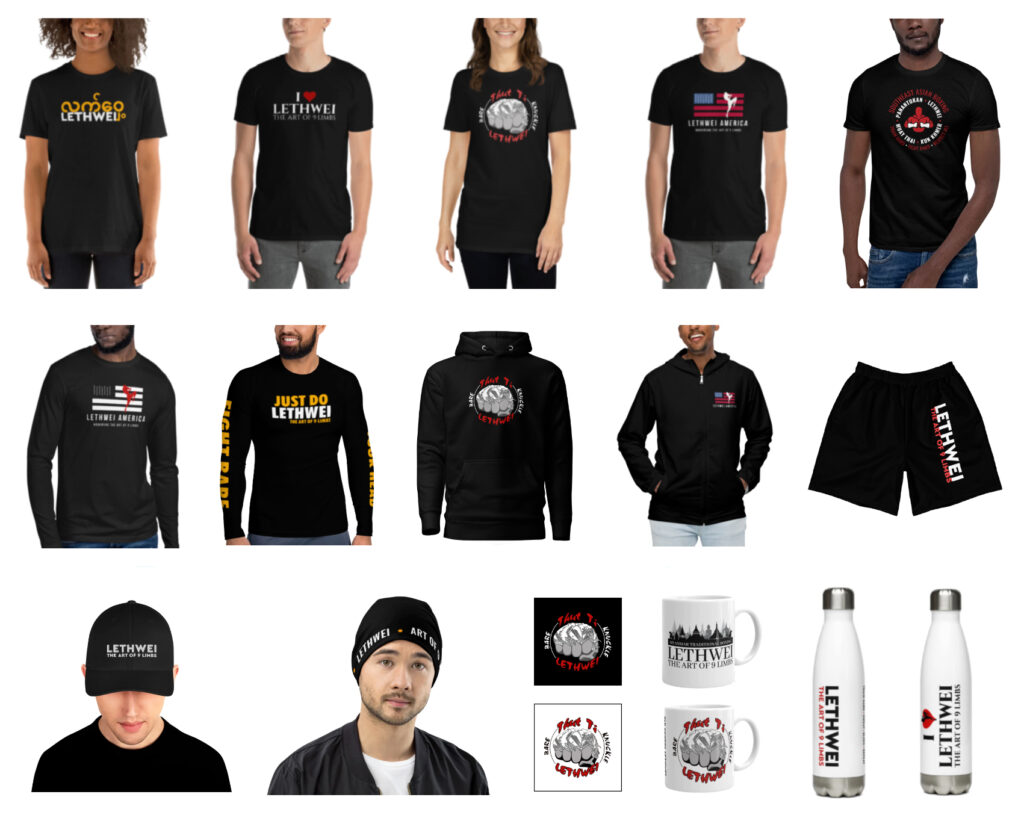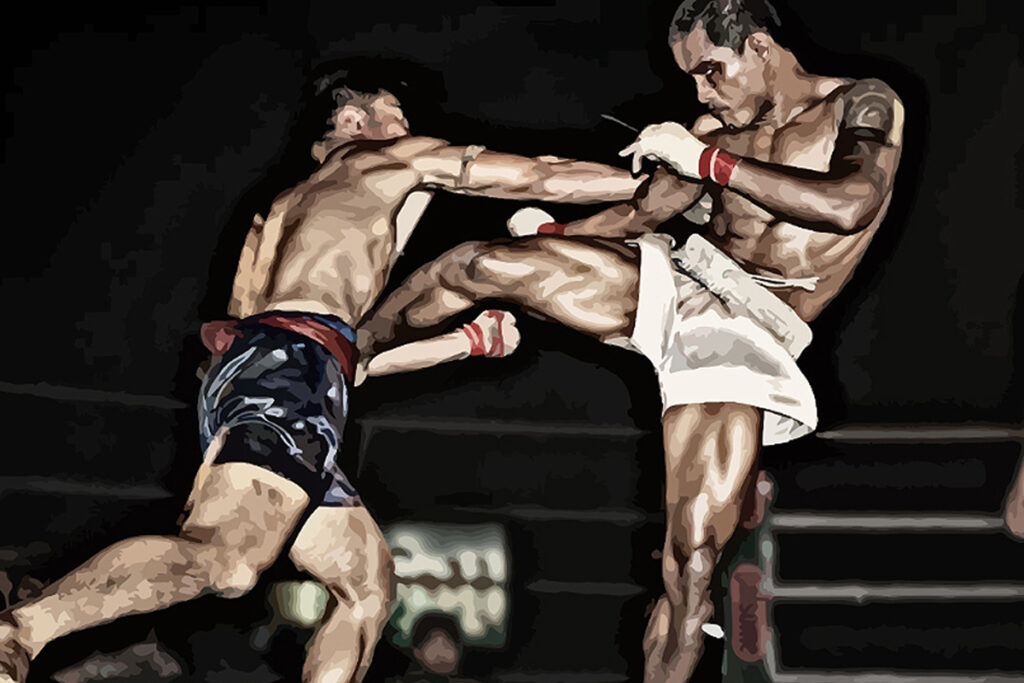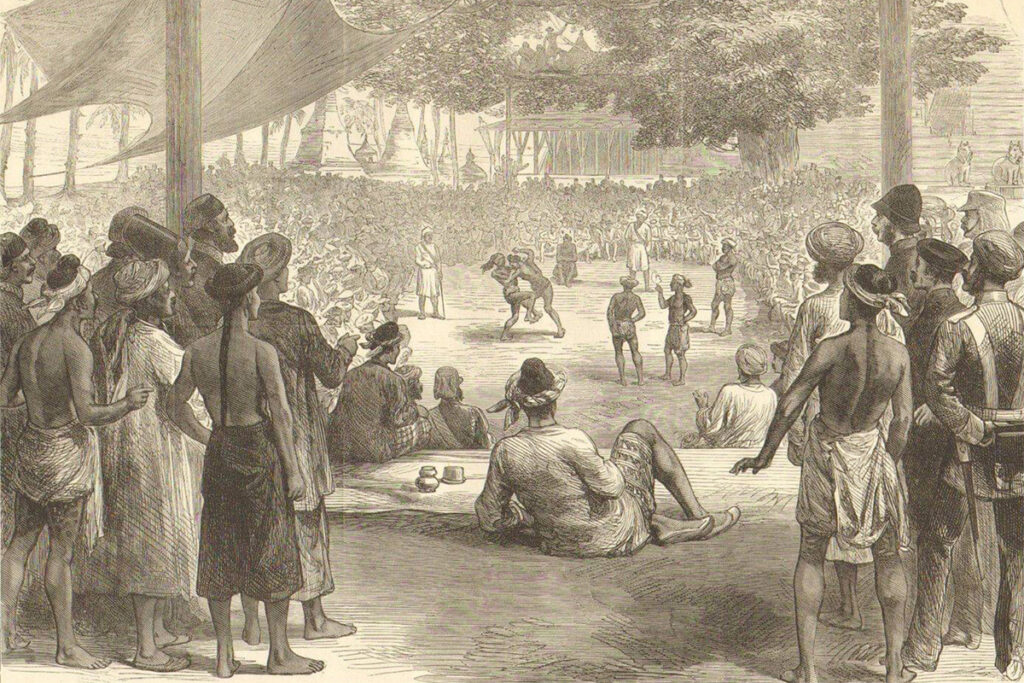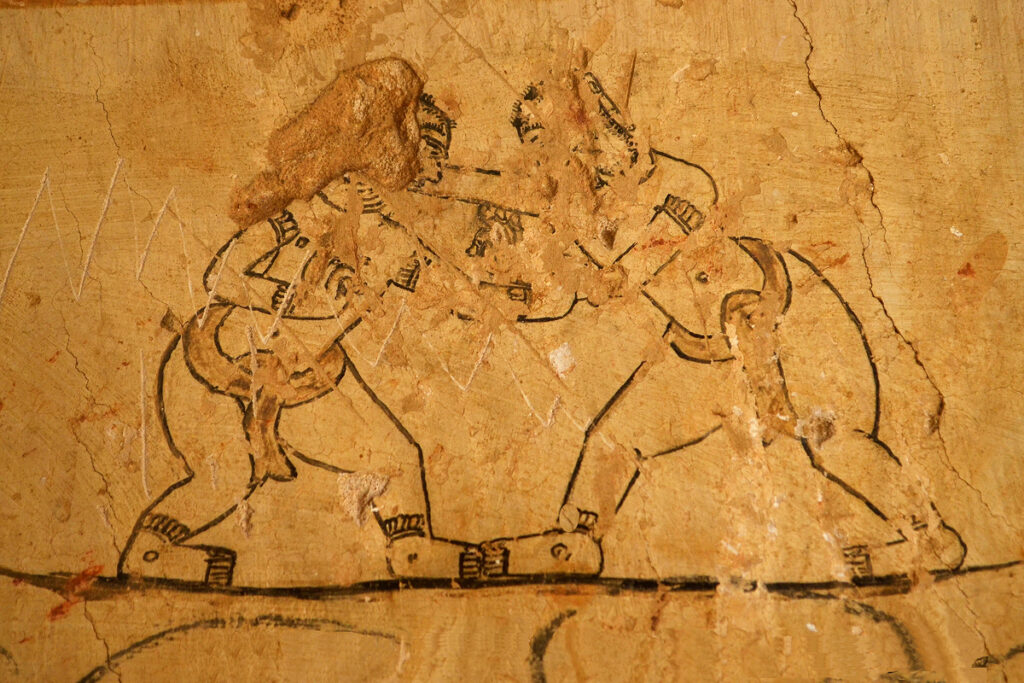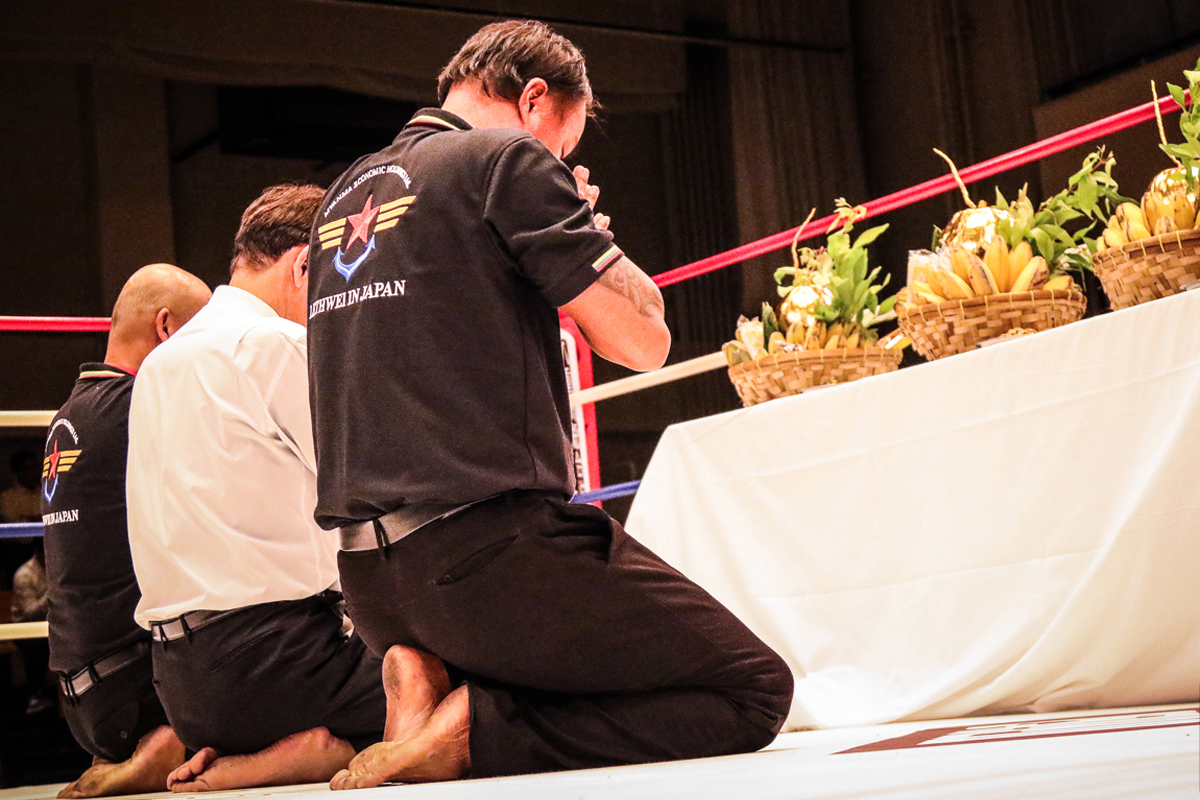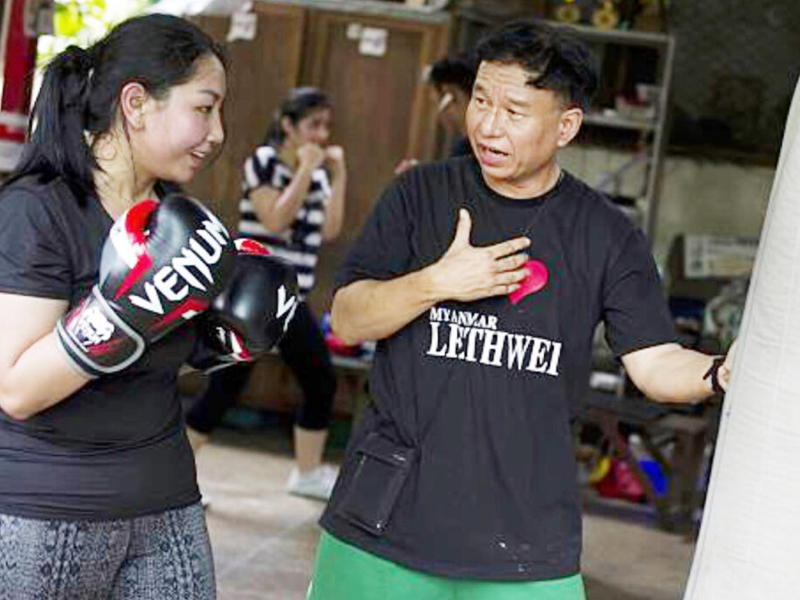DISCOVER
LETHWEI
THE ART OF 9 LIMBS
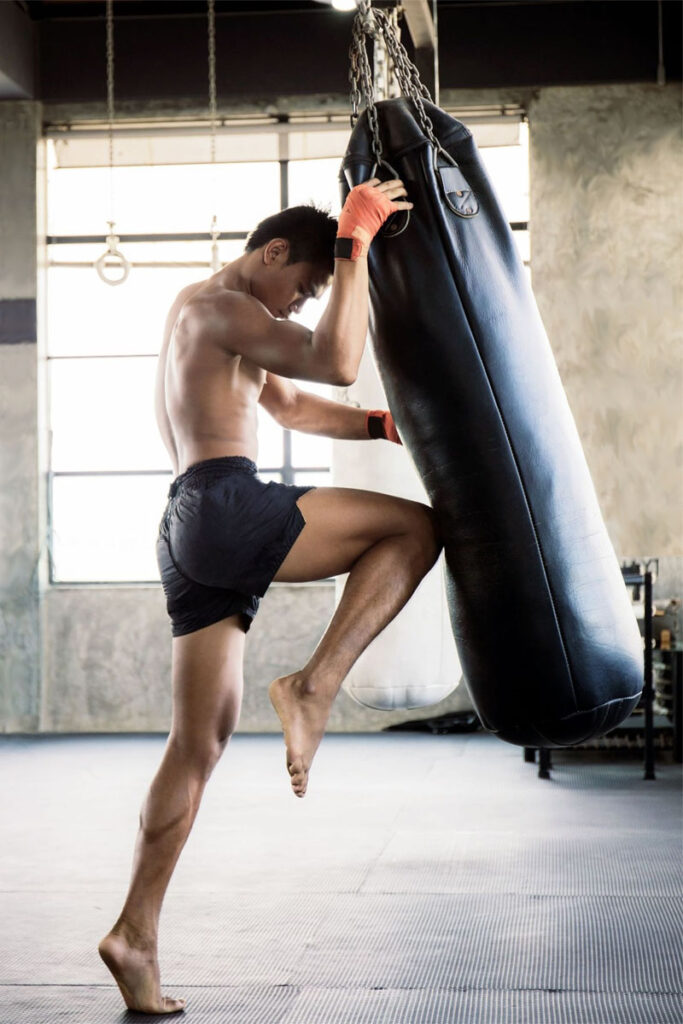
Myanmar Traditional Boxing or Lethwei, is considered one of the world’s most aggressive and powerful fighting arts. A thousand years old, Lethwei is a unique form of Southeast Asian boxing also known as the Art of 9 Limbs. Unrivaled in today’s combat sports, Lethwei allows a wide variety of fighting techniques and tactics including bare-fist punching, kicking, elbowing, kneeing, clinching, throwing, trapping, and choking.
Lethwei is an integral part of Myanmar’s cultural heritage and historical legacy. It is a symbol of strength and source of national pride. For the people of Myanmar, Lethwei is more than just a combat sport or fighting art. It is an essential element of their national identity, their traditions, and their culture.
“Lethwei is linked to the identity of Myanmar…
it is a combat sport, a fighting art, and a culture.”
– Saya Win Zin Oo
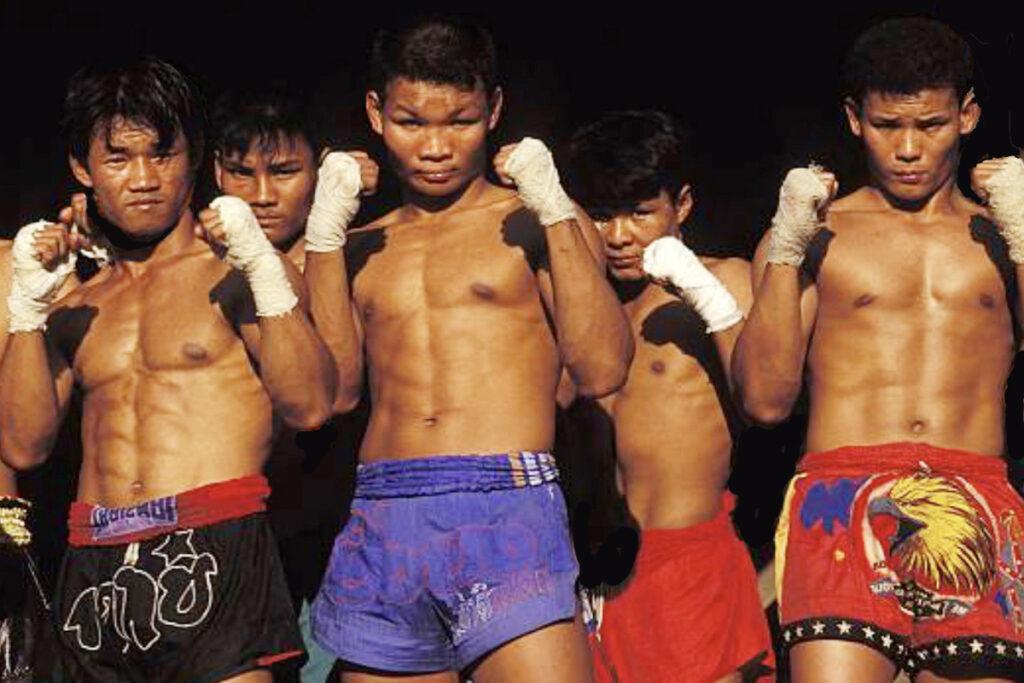
LETHWEI AS COMBAT SPORT
An age-old tradition that has been quietly maintained in villages and towns throughout Myanmar, Lethwei matches have been held for centuries between various tribes and ethnic groups. Fights were traditionally held in a large dirt circle with no rounds, time limits, or weight classes. Fighters only won by knockout or the fight was declared a draw. More modern approaches to Lethwei has competitors fighting in boxing rings with weight classes, timed rounds, and a point system.
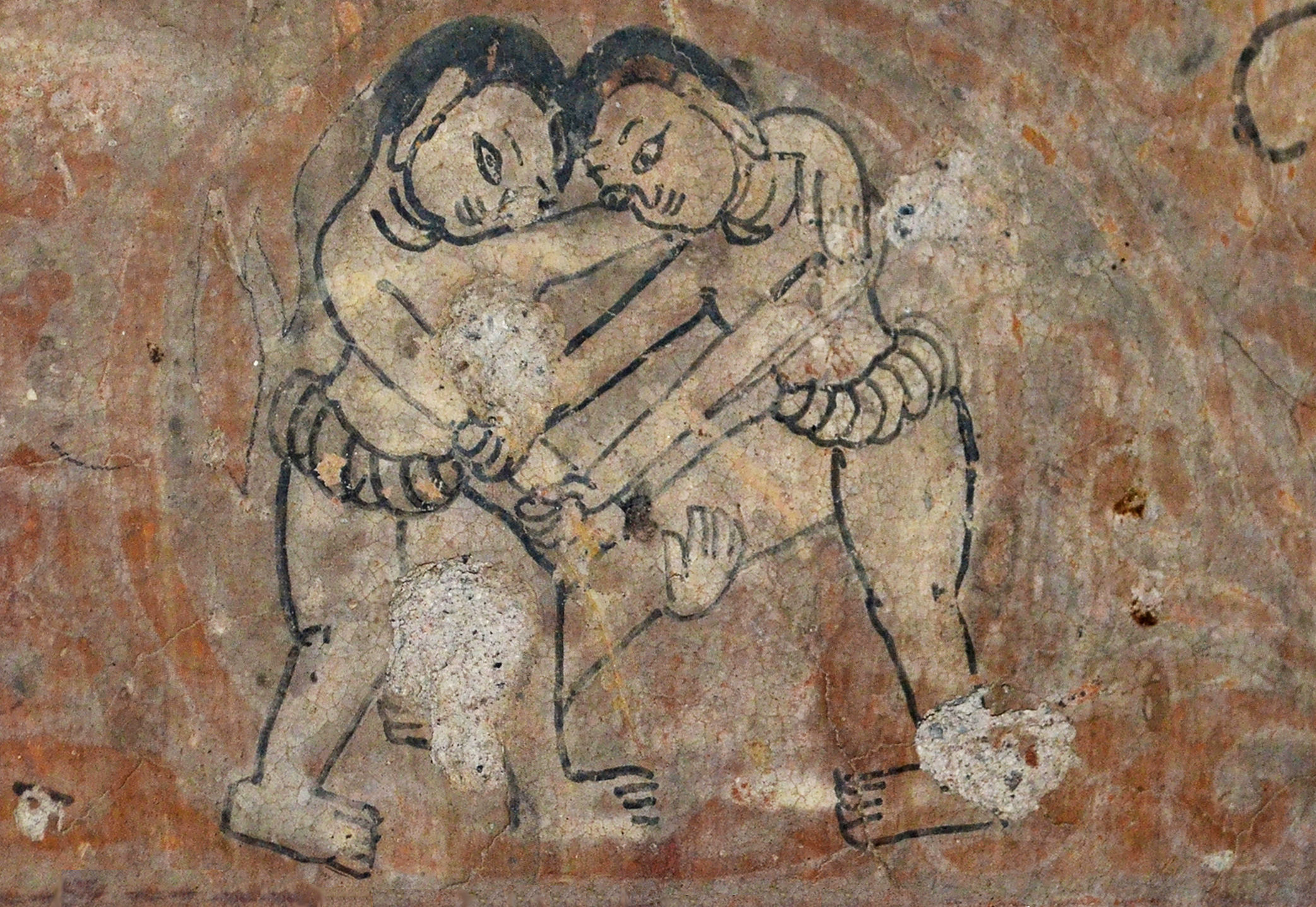
LETHWEI AS FIGHTING ART
Fighting arts have always been an integral part of life in Myanmar. As an ancient “warrior sport” practiced long ago to prepare soldiers for war, Lethwei is credited for training the toughest, most ruthless fighters in the world and has a deserved reputation as one of the world’s most extreme fighting arts. Lethwei’s virtually unrestricted fighting approach provides a more complete approach to self-defense preparation. It is direct, pragmatic and much closer to real unarmed fighting.
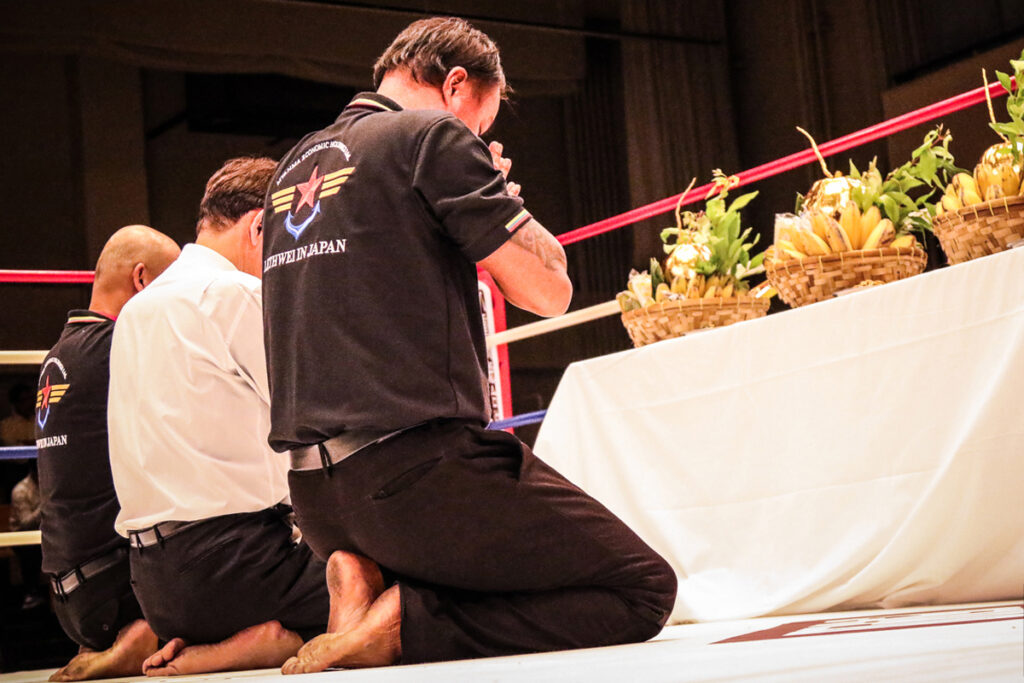
LETHWEI AS CULTURE
For hundreds of years, Lethwei tournaments have been held at festivals and celebrations. For the people of Myanmar, Lethwei offers more than just ringside entertainment. Lethwei reconnects them to their cultural identity and is an opportunity to celebrate their diversity. There is tremendous joy, camaraderie and fighting spirit displayed throughout the festival fights. Unlike commercial matches, traditional Lethwei matches continue to hold significance.
THUT TI LETHWEI
Thut Ti Lethwei is a combat sport, fighting art, fitness development, and culture-based approach to Lethwei. It was established and perfected by Saya Win Zin Oo over more than 40 years of teaching and coaching. Practiced at the Thut Ti Lethwei Club of Yangon, Myanmar, Thut Ti Lethwei has produced numerous local, national, and international champions as well as countless satisfied martial arts students, fitness enthusiasts, and cultural devotees. Saya Win not only developed Thut Ti Lethwei to effectively train Lethwei as a combat sport, but also as a fighting art, a fitness practice, and a cultural tradition as well. Thut Ti Lethwei provides training for competition, self-defense, health, and personal enrichment. It has been adopted and adapted by numerous other Lethwei teachers, coaches, fighters, and gyms in Myanmar. As Win Zin Oo explains, “Lethwei can be beneficial not only for fighting but also to promote health and discipline.
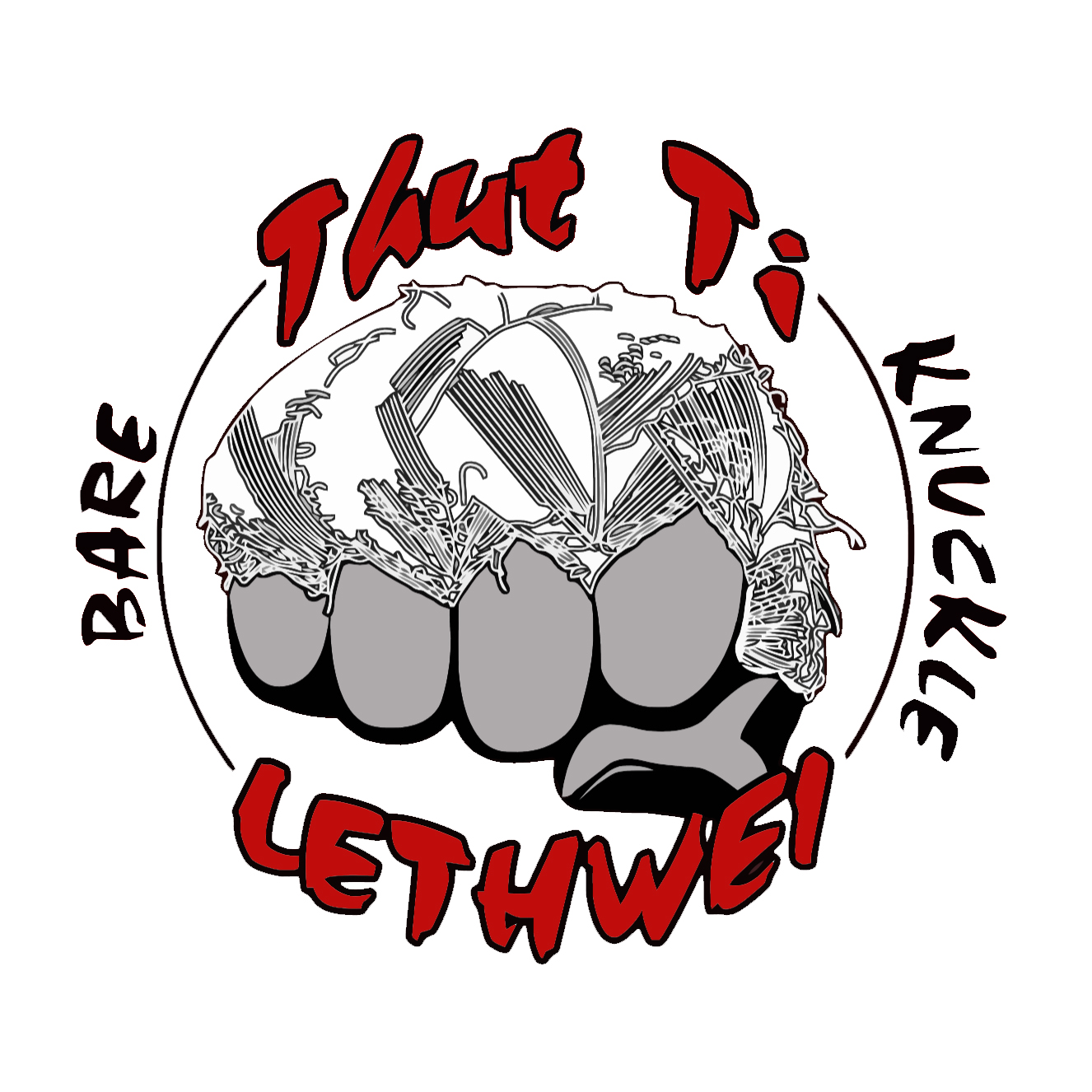
SAYA WIN ZIN OO
One of Myanmar’s premiere Lethwei Saya (teacher), Win Zin Oo is a highly respected and in-demand coach, instructor, and trainer. A professional Lethwei coach since 1982, Saya Win is the founder of the renowned Thut Ti Lethwei Club of Yangon. Over the more than 40 years he has been coaching and teaching Lethwei, Saya Win has produced numerous local, national and international Lethwei champions as well as top Lethwei coaches and promoters in Myanmar. As the first coach to take Lethwei onto the international stage, Saya Win was appointed the Joint Secretary of Myanmar Lethwei Federation in 1994. In 2007 he was appointed the Vice President of the Federation where he continues to serves as its primary technical advisor for training and competition. Widely respected for his extensive knowledge and experience as well as his ability to work with culturally diverse coaches, fighters, and representatives, Saya Win is considered the preeminent global ambassador for Lethwei.
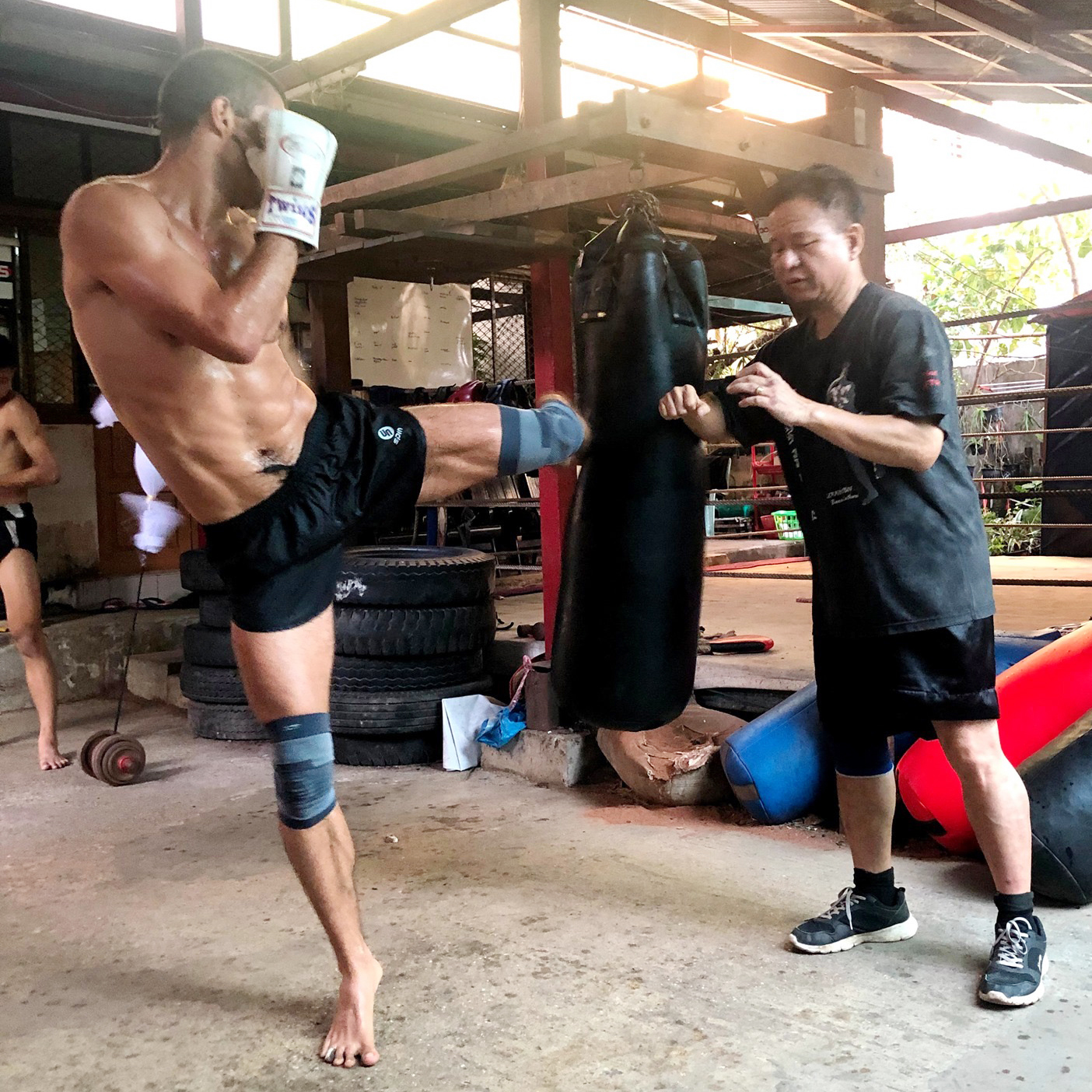
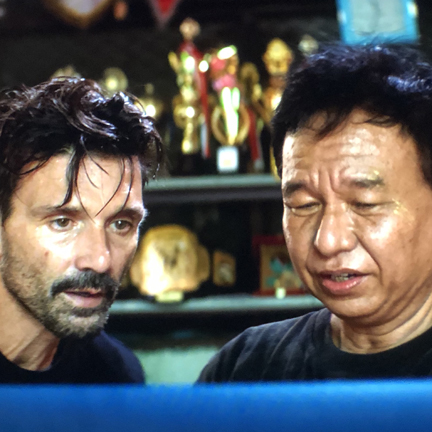
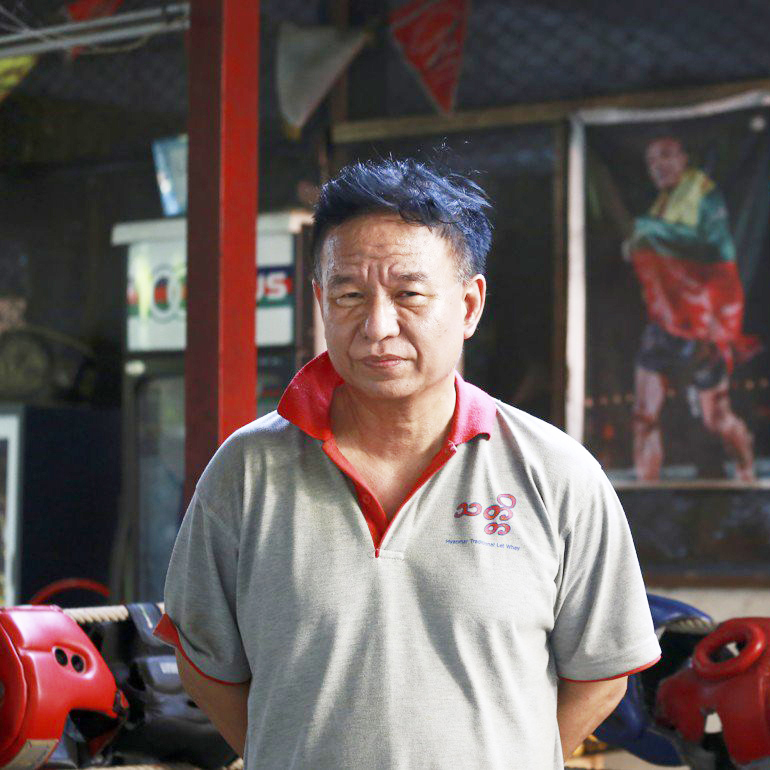
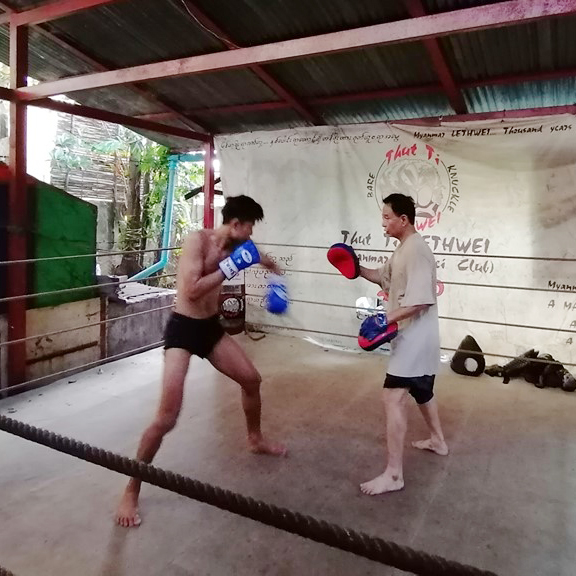
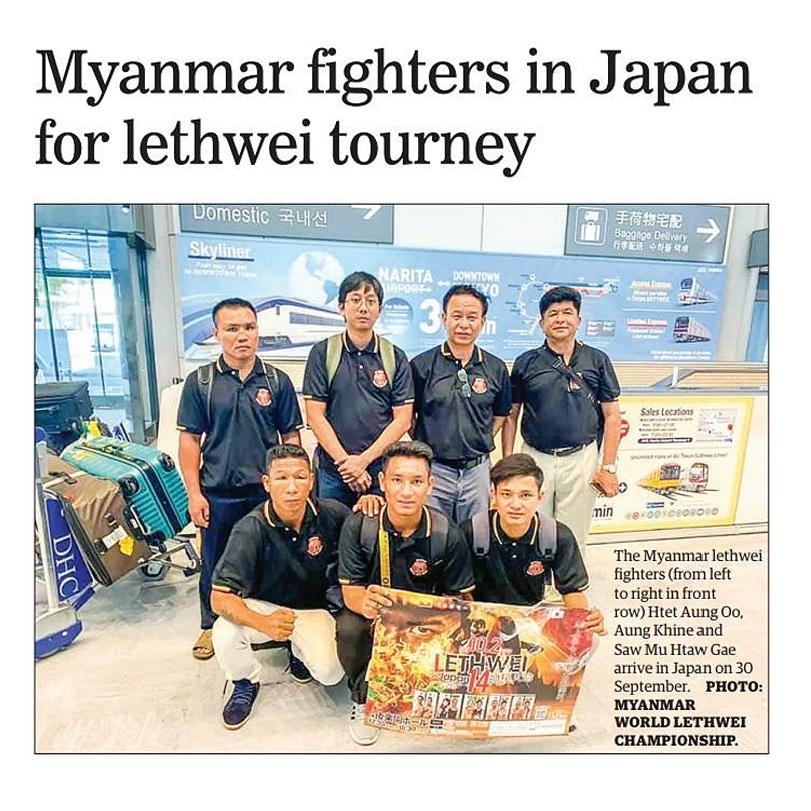
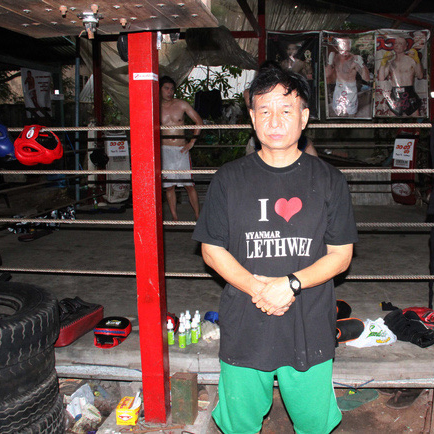
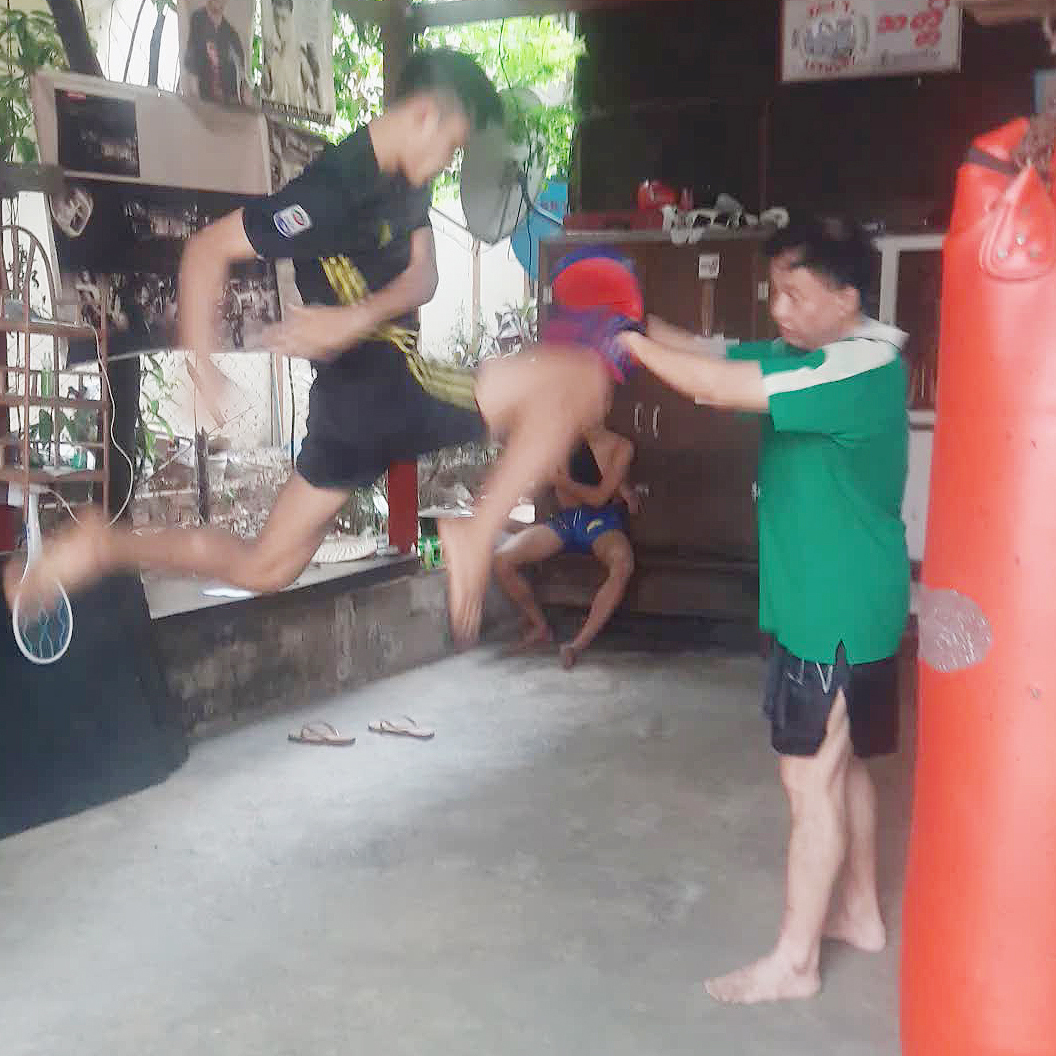
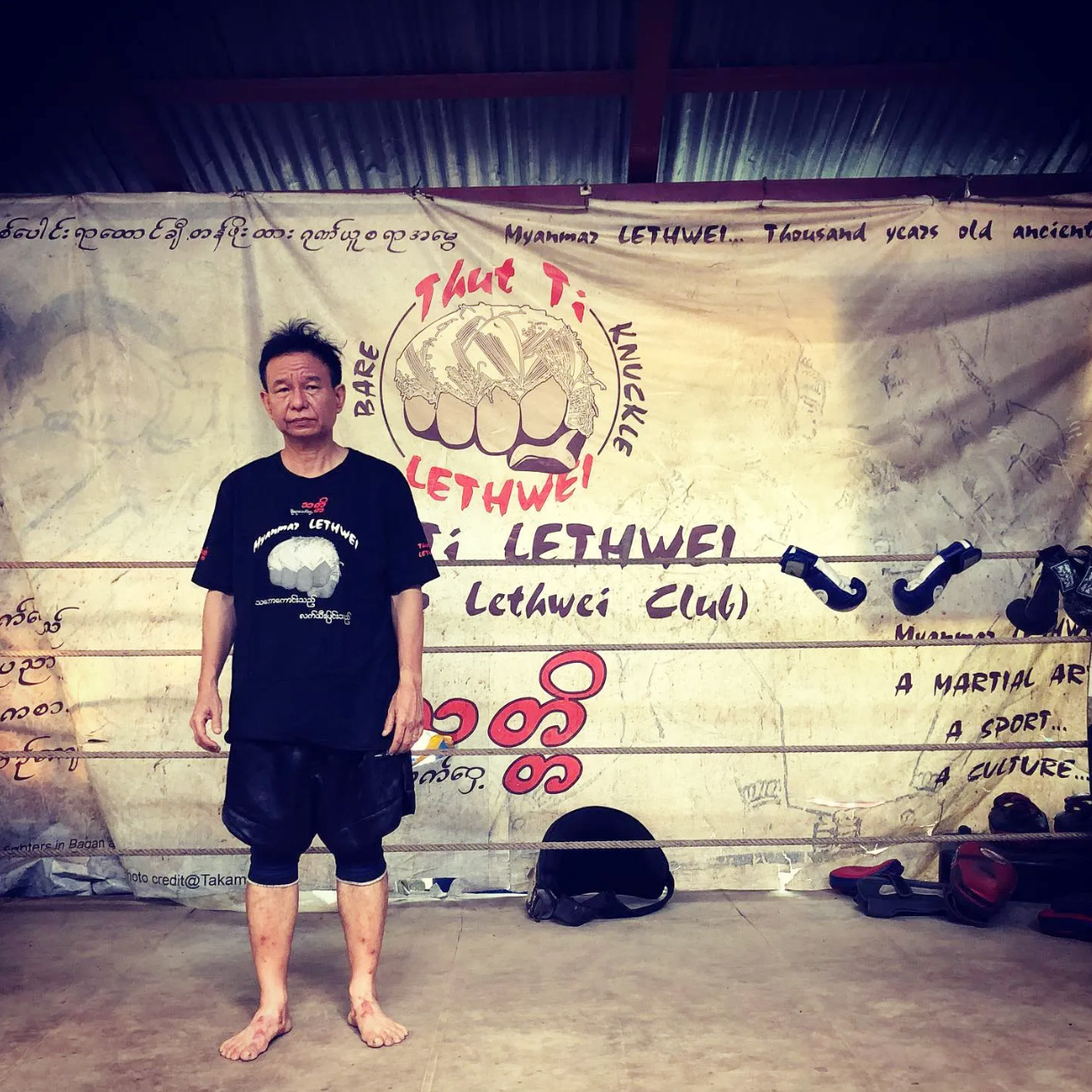
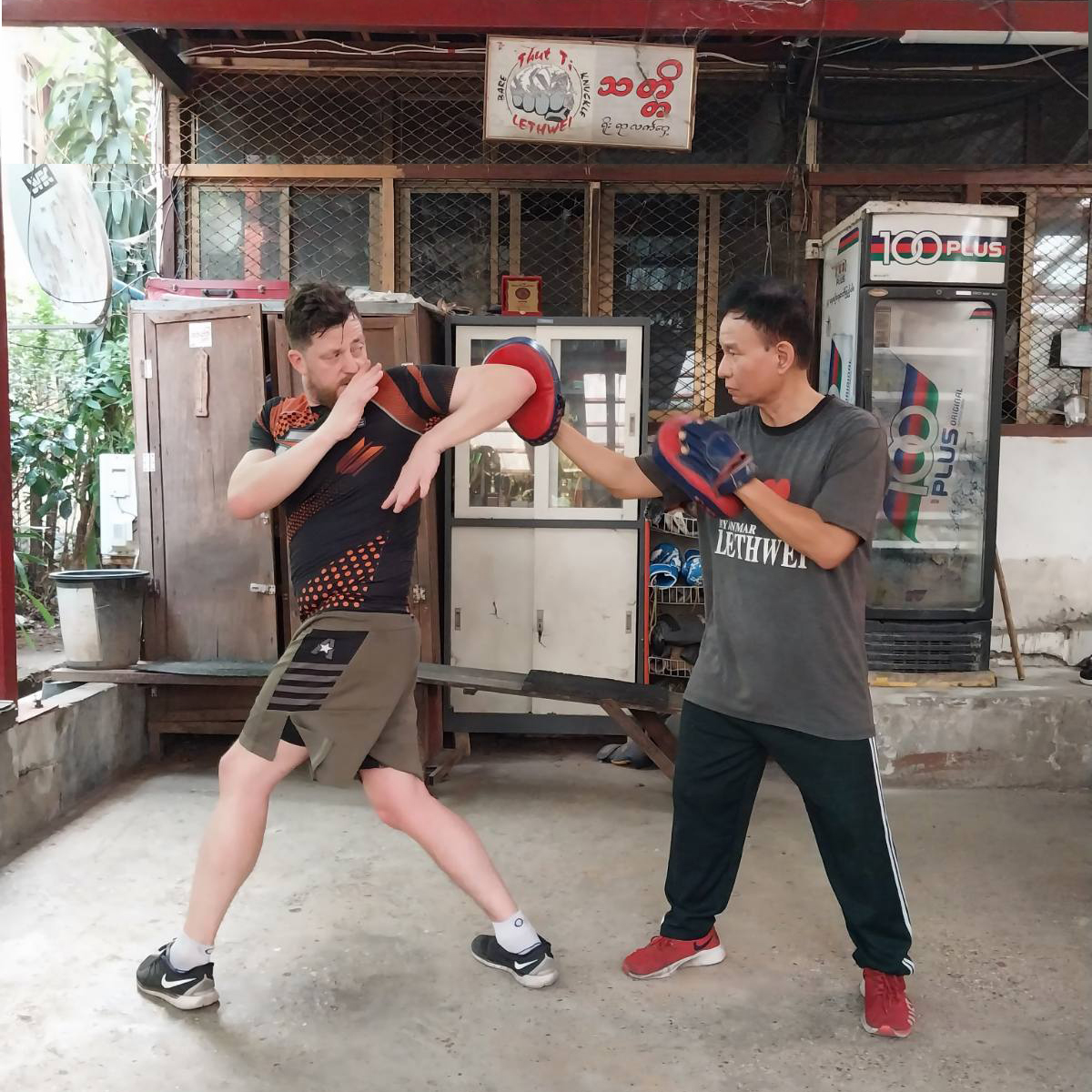
THUT TI LETHWEI CLUB
Behind a hidden red gate in a quiet neighborhood of Yangon lies the Thut Ti Lethwei Club. Turning his home into the Thut Ti Lethwei Club more than 40 years ago, Saya Win Zin Oo has seen a steady procession of Lethwei champions, fighters, and students who have gathered for fight preparations and fitness workouts. Saya Win’s Thut Ti Lethwei Club has long been the leading destination among Lethwei champions, aspiring fighters, martial arts students, fitness enthusiasts, and Myanmar cultural devotees. For individuals traveling from all over the world, the Thut Ti Lethwei Club continues to be a premiere training site for Lethwei. According to Saya Win, “Anyone who is interested can experience Lethwei here. Participating in Lethwei isn’t only about having a strong body and learning tough techniques, but also about having a gentle mind and a kind heart.“
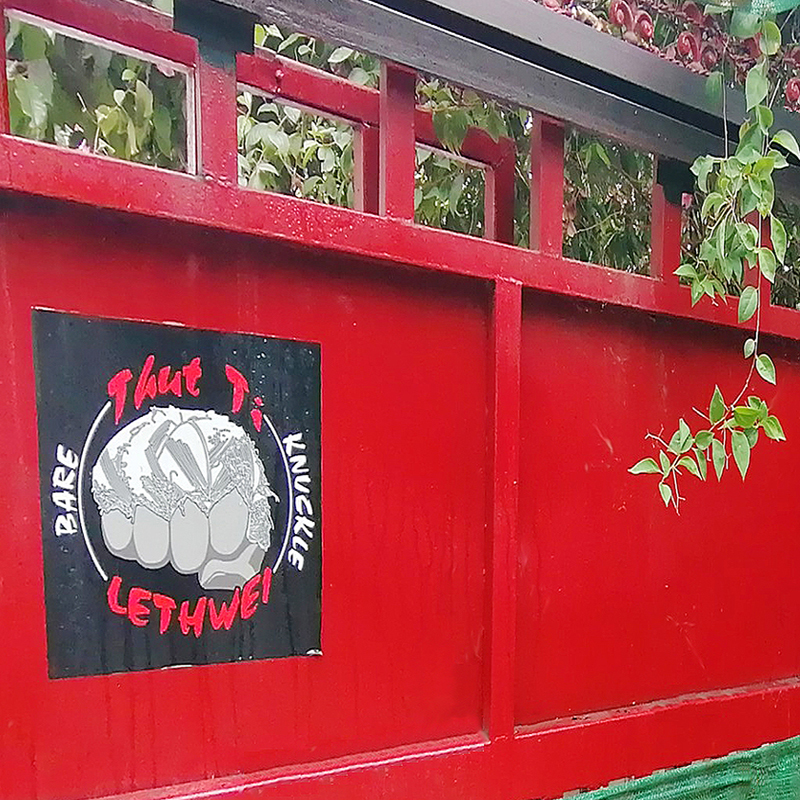
THUT TI LETHWEI GLOBAL
Established to preserve the legacy of Thut Ti Lethwei as developed and taught by Saya Win Zin Oo, the Thut Ti Lethwei Global Education and Training Initiative, more simply known as Thut Ti Lethwei Global, provides the foundation for learning and teaching Thut Ti Lethwei. Under the direction and guidance of Saya Win Zin Oo, an advisory team of professionals with extensive experience in teaching, educational and curriculum development, martial arts programming, exercise science, medicine, media, and management came together to organize and develop a curriculum, training program, and instructor preparation program. Following best-practices for instructional development and delivery, Thut Ti Lethwei Global offers a systematic, evidence-based approach to learning Thut Ti Lethwei.
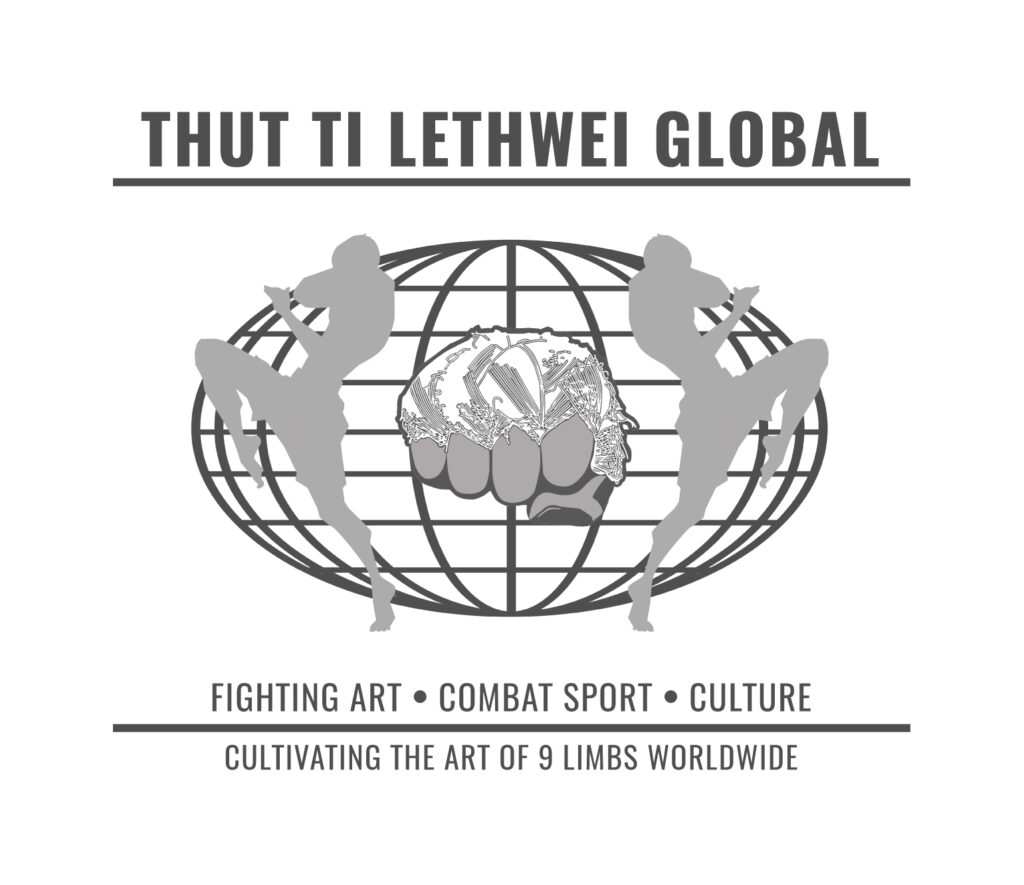
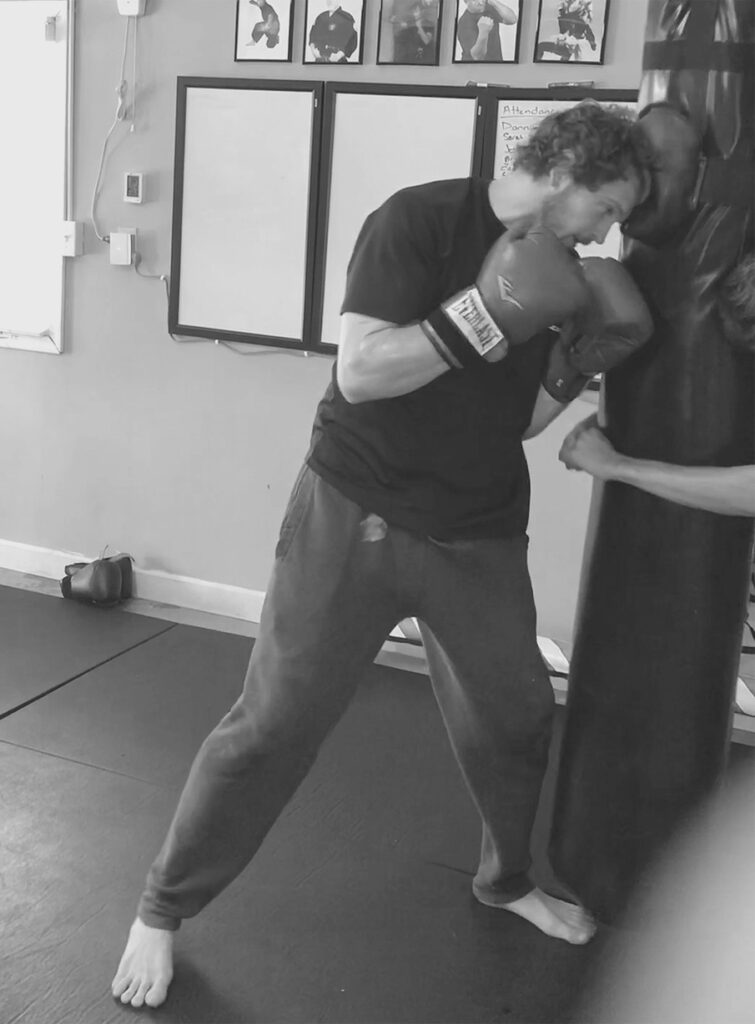
LEARN THUT TI LETHWEI
Thut Ti Lethwei Global offers a variety of opportunities to facilitate and enhance the Lethwei learning experience. One-on-one lessons, classes, targeted workshops and seminars are available in-person and virtually for those interested in exploring Thut Ti Lethwei.
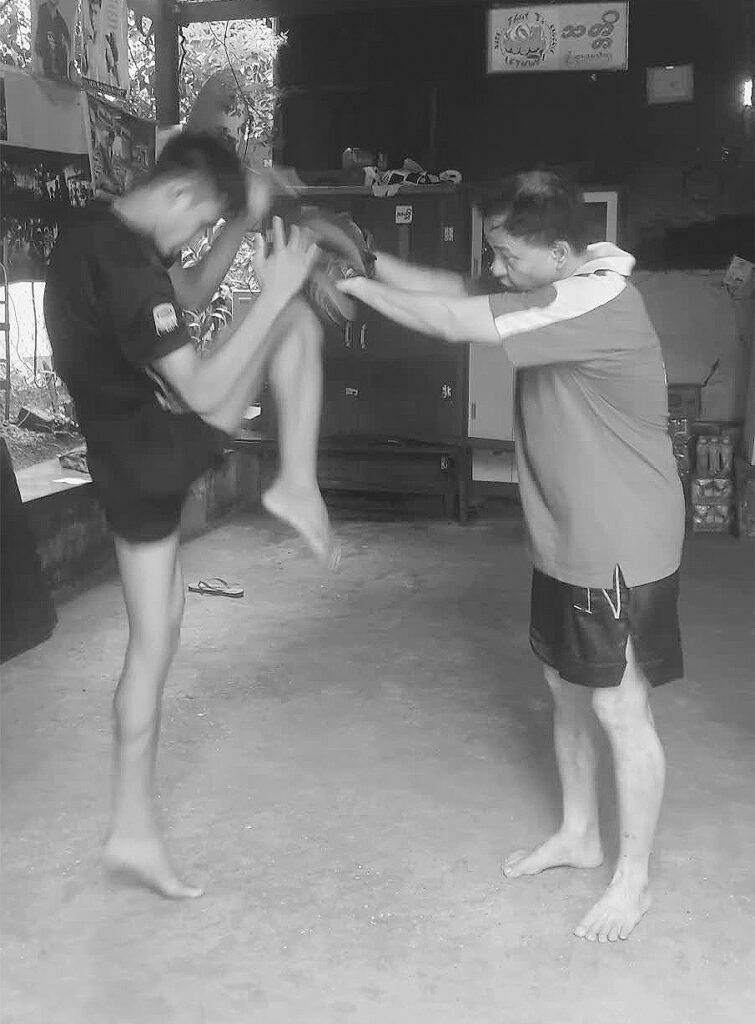
TEACH THUT TI LETHWEI
Thut Ti Lethwei Global offers an instructor preparation program leading to certification. Designed to produce highly-competent Lethwei Saya (teachers), the Thut Ti Lethwei Global Instructor Certification Program offers both student-based and prior learning pathways to certification.
news
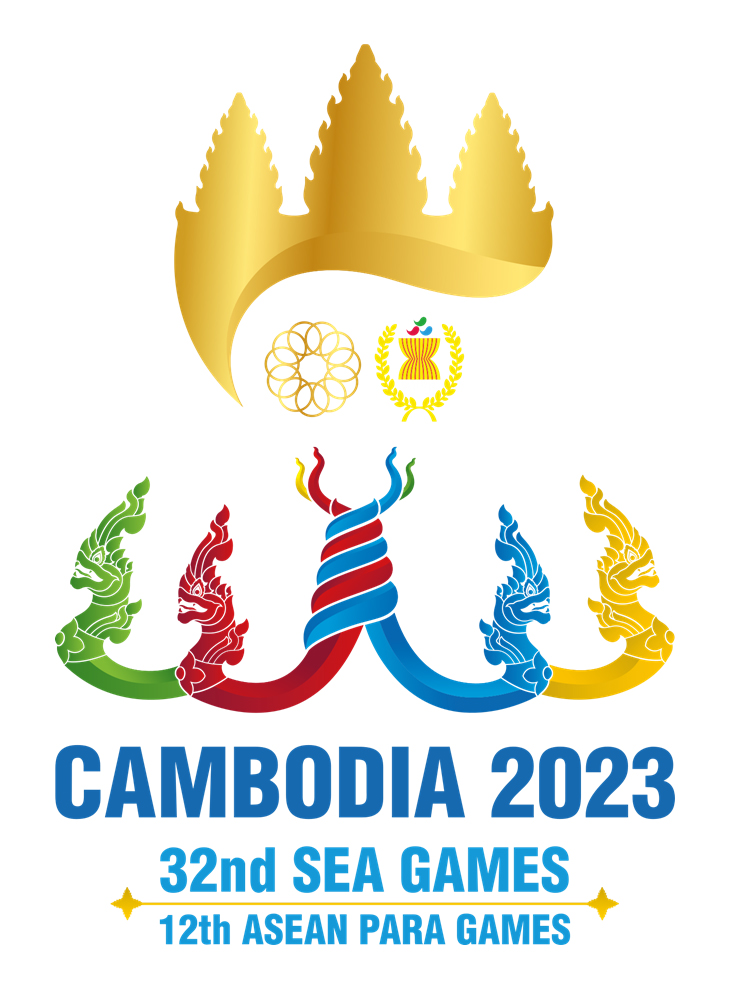
SAYA WIN JUDGES KUN KHMER AT SEA GAMES, MAY 2023…
Saya Win judges Kun Khmer competitions at
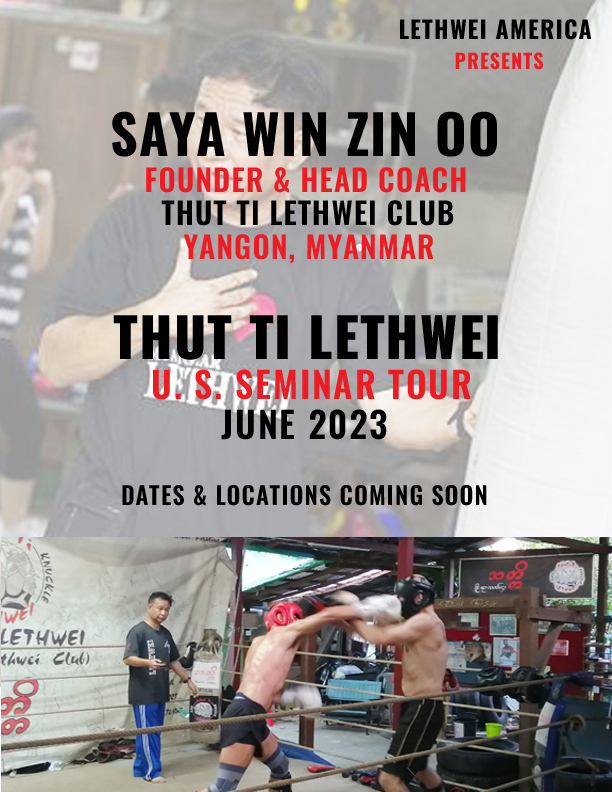
SAYA WIN FINISHES U.S. THUT TI LETHWEI TOUR, JUNE 2023…
Saya Win finishes 2023 U.S. Thut Ti

NETLFIX “FIGHTWORLD” FEATURES SAYA WIN AND THE THUT TI LETHWEI…
Netflix “FIGHTWORLD” features Saya Win In the
SEMINAR TOUR 2023
EAST COAST
BALTIMORE/WASHINGTON METRO AREA
JUNE 17-18
WEST COAST
LOS ANGELES, CALIFORNIA
JUNE 24-25
LETHWEI RESOURCES

NETFLIX "FIGHTWORLD" starring Frank Grillo
Actor Frank Grillo’s filmography includes Marvel Cinematic Universe films, MMA-centric movie “Warrior”, and TV series “Kingdom” so it may not be surprising to learn that he has a passion for combat sports. In this docuseries, the fight enthusiast travels around the world, immersing himself in different fight cultures to understand their traditions and the motivation for the combatants who participate in the various disciplines. Episode three, “Myanmar: Crossroads” focuses on Lethwei and features Saya Win Zin Oo and the Thut Ti Lethwei Club.
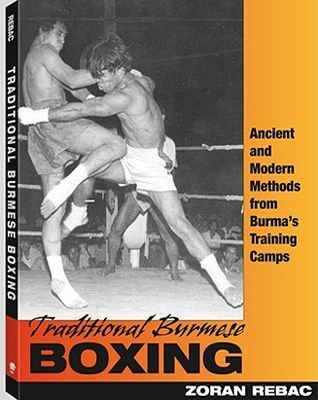
TRADITIONAL BURMESE BOXING by Zoran Rebac
Through rare photographs and firsthand reports, enter a world few Westerners have ever seen. Learn traditional Burmese boxing techniques from the basic stances, kicks and strikes through advanced “experts only” moves, and be introduced to the grueling training exercises practiced in ancient times and the modern methods used by fighters today. This book is no longer in print, but used copies may still be available from used booksellers.
Our mission at Lethwei Wear is to honor and support the thousand-year-old Myanmar Traditional Boxing method of Lethwei. One of the world’s most brutal and effective fighting arts, Lethwei is also known as the Art of 9 Limbs due to its extensive range of fighting techniques including bare-fist punching, headbutting, elbowing, kneeing, and kicking. Our designs celebrate the practice and traditions of Lethwei. Profits from the sales of Lethwei Wear apparel and accessories go to support the instruction and promotion of Thut Ti Lethwei in the United States and Worldwide. We offer hundreds of Lethwei, Thut Ti Lethwei, Lethwei America, and Southeast Asian Boxing branded items. Apparel collections include short-sleeve t-shirts, long-sleeve t-shirts, hoodies, rash guards, jackets, hats, beanies, shorts. Accessory collections include water bottles, mugs, hip packs, wall prints/posters, flags, and stickers.

